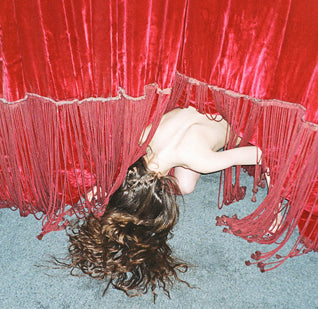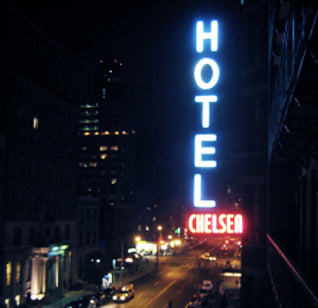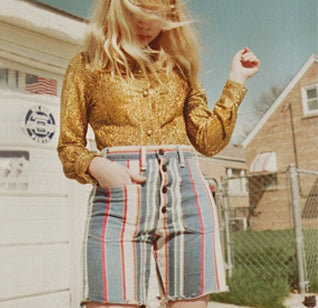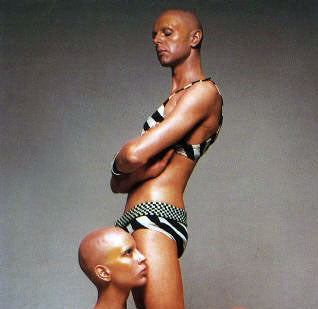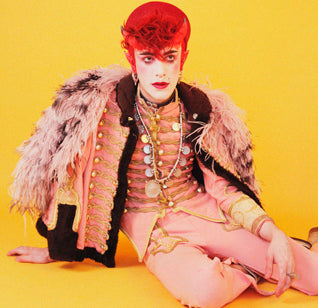MUTILIATION TO CANNIBALISM; ART CONTINUES TO PROVOKE
Performance art retains the power to shock
by Ellie Howard
Sew your mouth shut, bite your own flesh and slice your lips with a razor blade for the sake of art. A violent attack on the era that prophesised ‘self-love’, or an desperate attempt to remonstrate with a social contract that was shaking the world upside down in 1970’s? Barbaric acts tinged with self-violence labelled ‘Masochistic art’ were practised by artists such Gina Payne, Marina Ambrovic and Ulay and Vito Acconci during this period. Performance art for these artists became about pain and our attraction to it, the consequence of this attraction was laid bare amongst their audience. So why did these artists feel compelled to use their bodies as their canvas, to desire the sensation of pain?


Gina Payne’s performance of ‘In Sentimental’, 1973. Payne the feminist artist, dressed takes a bunch of roses in her hand and hurts herself with their spines. The blood dripping on the bouquet turns the roses from white to red. At that point, the artist cuts herself with a razor blade.
Kathy O’Dell in her seminal work ‘Contract with Skin’ focuses on a handful of well-known body art pieces. She examines the way in which these artists use masochistic strategy in order to push the boundary between artist and audience. At what point does the audience step in while witnessing acts of self-violence? Or do we leave our sense of mortality at the entrance, along with our bags? And does our very presence at an act of self-mutilation, make us into pawns within a game of larger economic power? With many contemporary artists revisiting performance video art, masochistic love is making a return.
Selvik Wenshoel, a young man from Norway recently garnished and ate his own hipbone, which he served with potato gratin. Grotesque to us, but to Wenshoel it was a natural process, which he documented via film. A lifetime of physical pain caused by a deformed hip ritually ended with a moment of emotional pain. Ultimately, his aim was to provoke “My goal is to get the audience reflecting. Life is short and people have the habit of running away from pain… Pain is not physical—it's an idea”.

Selvik Wenshoel, the art student who ate his own hip after an operation.
In “Rhythm 0”, Marina Abramovic invited members of her audience to use objects laid out in front of her, on her body. She opened up discussion between artist and audience, or as O’Dell refers to as a social contract. She sat passively, her body malleable. Objects included A gun, honey, a feather, a whip; some designed to entice pleasure and other capable of causing death. She describes the audience at first, as playing with her, which quickly descended into mob-like aggression. Members of the public would cut her clothes, slash her neck and drink her blood before smoothing it over with a plaster. One stranger even loaded and pointed the gun at her head. Ambrovic endured six hours of horror before the gallery finally shut the exhibition down. As she walked shaken and naked through the gallery, earlier aggressors ran from confrontation. The body of the artist became their primary material, a naked canvas that is subject to strokes and marks of abuse. They saw the artist as object, nothing more.

Marina Abramovic’s performance of ‘Rhythm 0’, 1974.
The act of cutting and the decision to cut is handed over to the audience. We question who is really in control here? The infliction of pain by perpetrator (audience) and capacity to be violently vilified (artist) is examined in the social contract O’Dell describes. However this power dynamic was interchangeable, in Gunter Brus’s performance ‘Zereisseprobe’ 1970, the audience was witness to the artist’s self-mutilations, performed in uncomfortable proximity to his viewers. Masochistic performance art of the 1970’s was characterised by the bizarre relationships that the artist choose to develop, in particular the role of self and other. This is topical in that masochistic performance was about extreme discipline, self-degradation and punishment in order to dramatize dynamics between power as state, self as artist and the body as canvas.

Gunter Brus’s performance of ‘Zereisseprobe’, 1970.
Masochistic art interestingly surfaces whenever there is a loss of faith in the social contracts that bind us as a culture. Whether it is the Vietnam war and the massacre of My Lai which was historically mis-represented by the state or the terrifying AIDS epidemic that swept America. Perhaps it is the need to control, or to symbolically represent socio-political issues that leads the artists to create a language of visual metaphor, elevating pain. Known as the “quasi-masochistic” Artist, Chris Burden shot to fame, literally, in his piece ‘Shoot’ 1971. The Artist stood in a black gallery space, his friend just 15 feet away, took aim and fired a bullet into Burden’s left arm. The piece caused outrage; it was labelled an indecent commentary on the Vietnam War. It was undoubtedly a desire to feel the sensation of pain, to cheat death and to blur the boundary between life and art.

Chris Burden’s performance of ‘Shoot’, 1971.
Vito Acconci would also focus on pain, evacuating the sensation of pleasure. In his piece ‘Trademarks’ 1970, the artist forces his body into a series of distorted poses for the camera, biting into his flesh. Large feral like marks appear across his slim body, he fills these with inks and makes an ‘imprint’ producing commodity. Acconci referencing branding, the idea of stamping a product for the purpose of commercial exchange, a concept that would begin to resurface amongst other masochistic art and examined closely within O’Dell’s book.
However the act of biting flesh, recycled in the prodigal son, the boy who ate his own hip is testament to idea of artist feeding his sense of self-worth. Social and cultural instability instigates the insecurity within the artist, which is becomes manifested through the desire to self-harm, to use the body as canvas, and pain as a tool used to destruct. Masochism is a term adopted by us to describe our own reflections on work that focuses on sensation and in particular pain. Many of the artists mentioned simply created a performance that was open for dialogue, with little description and documentation. What we react is entirely our own, it is then we realise that we are the in fact the undisputed artwork of masochistic performance art.












